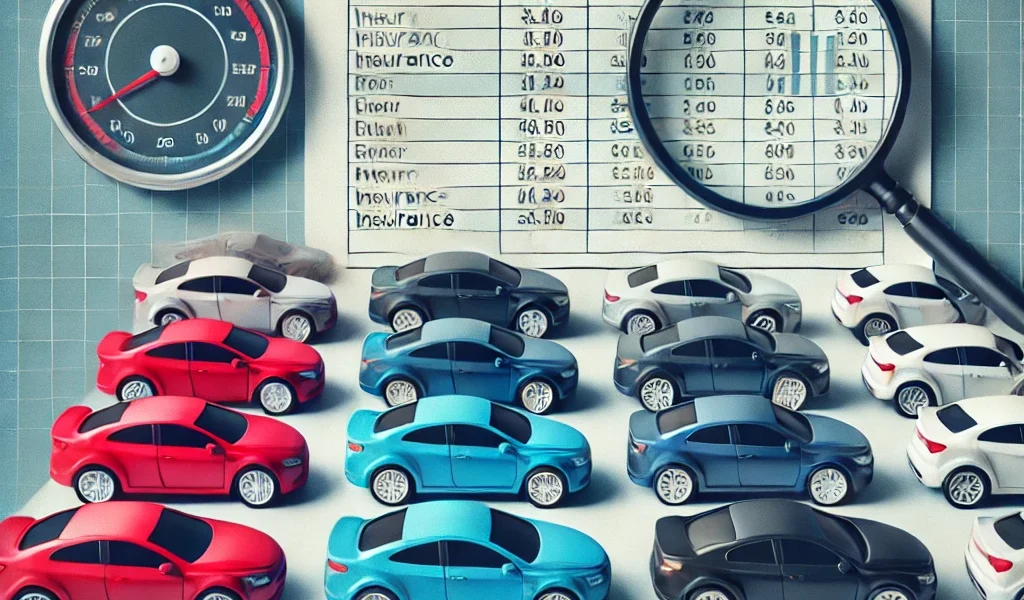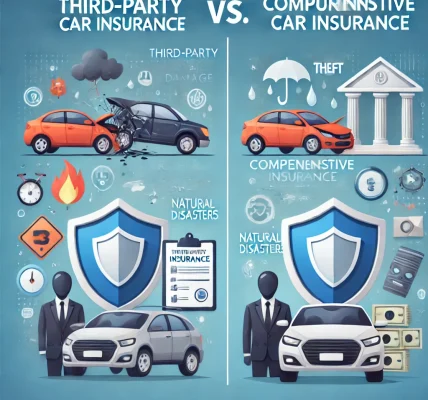hen shWopping for a new car, you might have heard the popular belief that red cars cost more to insure. Many drivers worry that choosing a specific color—especially bright or flashy ones—could lead to higher insurance premiums. But is this actually true?
In this blog, we’ll explore the connection between car color and insurance rates, separating myths from reality, and uncovering what really impacts the cost of your car insurance.
The Myth: Red Cars Cost More to Insure
One of the most persistent car insurance myths is that owning a red car automatically leads to higher premiums. The reasoning behind this belief is that red cars are supposedly associated with:
- Faster driving and aggressive behavior
- Higher likelihood of getting pulled over
- Increased accident rates
But the truth is, insurance companies do not consider car color when determining your insurance rates. Let’s explore why this myth exists and what actually impacts your premiums.
The Reality: Car Color Has No Direct Impact on Insurance Rates
Insurance companies assess risk based on data and statistics, not the color of your vehicle. When calculating your premium, insurers focus on factors that directly influence the likelihood of an accident or a claim being filed. Here’s what really matters:
1. Vehicle Make, Model, and Year
Insurers categorize vehicles based on their risk profile. Factors such as crash-test ratings, safety features, repair costs, and theft rates all influence how much you pay for insurance.
For example:
- A sports car with a high-performance engine will have higher insurance rates than a standard sedan, regardless of color.
- A car with advanced safety features may qualify for discounts.
2. Driving History
Your personal driving record is one of the most important factors affecting your insurance rate. If you have a history of accidents, speeding tickets, or other violations, you will likely pay more for coverage.
3. Location
Where you live also plays a major role in insurance costs. Urban areas tend to have higher premiums due to increased traffic, crime rates, and accident risks. In contrast, rural areas generally have lower insurance costs.
4. Vehicle Usage and Mileage
The more you drive, the higher your insurance premium may be. Vehicles used for commuting long distances or business purposes typically have higher rates than those used occasionally.
5. Credit Score (In Some States)
Many insurers use credit scores to predict risk. A higher credit score can result in lower premiums, while a lower score may increase your rates. However, some states have banned the use of credit scores for determining insurance rates.
6. Coverage Type and Deductible
The amount of coverage you choose directly impacts your insurance cost. Comprehensive and collision coverage are more expensive than basic liability coverage. Choosing a higher deductible can lower your premium but means you’ll pay more out-of-pocket in case of a claim.
Why Do People Believe Car Color Affects Insurance?
Several factors contribute to this widespread myth:
1. Visibility and Safety Perception
Certain colors, like white and silver, are believed to be safer because they are more visible in low-light conditions. While visibility can play a role in accident prevention, insurers do not adjust premiums based on color.
2. The Popularity of Red Sports Cars
Red is a common color for sports cars, which are often associated with higher speeds and riskier driving behavior. This has led to the assumption that red cars cost more to insure when, in reality, it’s the car’s performance and type—not the color—that influences premiums.
3. Law Enforcement Stereotypes
Some people believe red cars get pulled over more often. However, studies suggest that vehicle make and driver behavior are more significant factors in receiving traffic citations than color alone.
Theft Rates and Car Color: Is There a Connection?
While car color does not impact insurance rates, it may play a minor role in theft statistics. Some reports suggest that neutral-colored cars (white, gray, black) are stolen more often simply because they blend in and are more common. However, insurers focus on theft rates of specific car models, not colors, when calculating premiums.
Frequently Asked Questions (FAQs)
1. Do Red Cars Get Pulled Over More Often?
There is no concrete evidence that red cars receive more traffic tickets than other colors. Police officers focus on violations rather than vehicle color.
2. What Car Colors Are Considered Safer?
White, silver, and yellow cars are often considered safer because they are more visible, especially in low-light conditions. However, insurance companies do not adjust rates based on this.
3. Do Black Cars Have Higher Insurance Rates?
No, black cars do not have higher insurance rates. While darker colors may be harder to see at night, insurers do not factor this into their pricing models.
4. Does Changing My Car’s Color Affect My Insurance?
Changing your car’s color does not affect your insurance premium, but you should inform your insurer of any major vehicle modifications to ensure proper coverage.
5. What Factors Should I Consider When Buying a Car to Keep Insurance Costs Low?
To get the best insurance rates, consider:
- A vehicle with strong safety ratings
- A model with lower repair and replacement costs
- A car that is not frequently stolen
- A vehicle with advanced security features
Conclusion: The Truth About Car Color and Insurance Rates
The idea that car color affects insurance rates is a myth. Insurance companies base their premiums on factors like vehicle make and model, driving history, location, and usage—not the color of your car.
So, if you’ve been holding back from getting that red sports car because of higher insurance concerns, rest assured: the color of your car will not impact your insurance rates. Instead, focus on choosing a car with good safety features, maintaining a clean driving record, and comparing quotes from different insurers to get the best deal.


